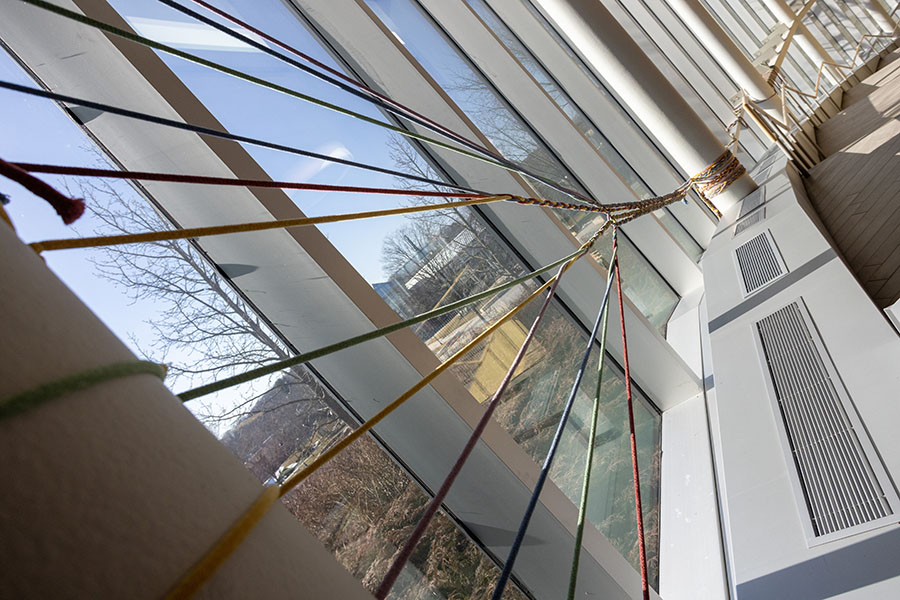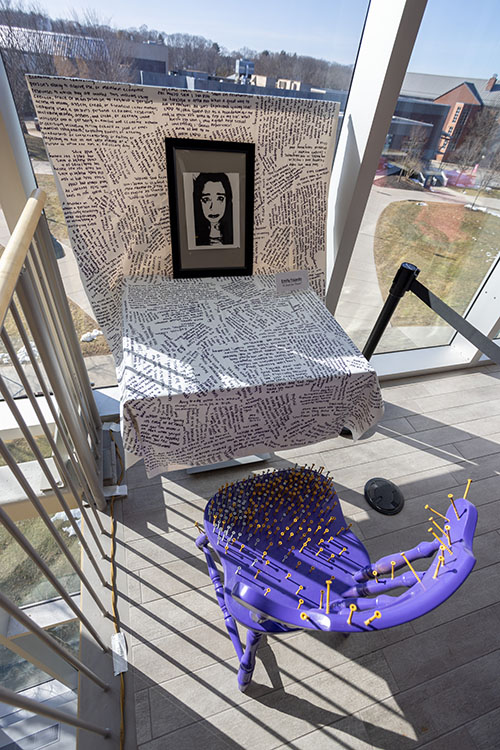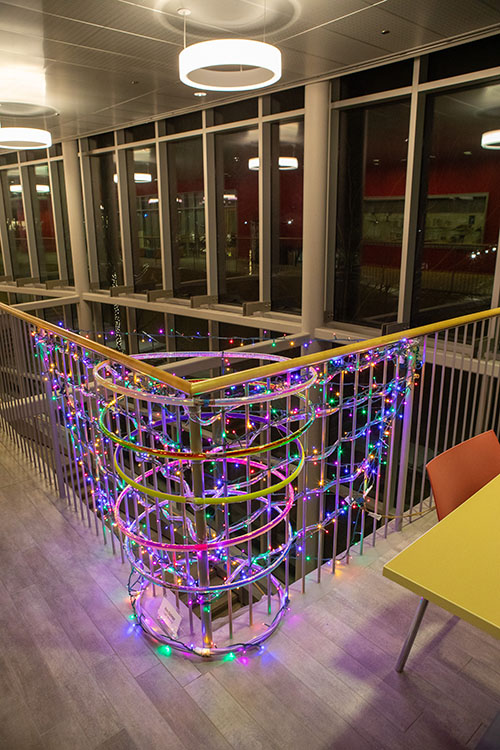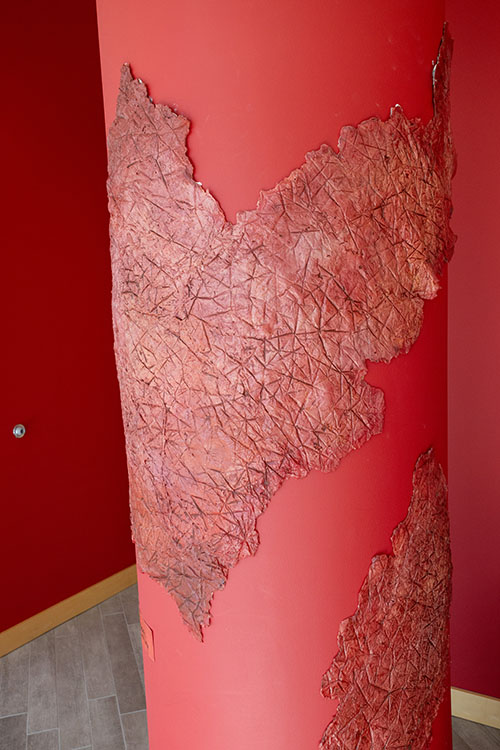- Apply
- Visit
- Request Info
- Give
Student art installed in 'Nooks and Crannies' of fine arts center
Written by Elisabeth Craig
Published on March 01, 2024

Eastern Connecticut State University’s Fine Arts Instructional Center (FAIC) was recently filled from the lobby to the top floor with mixed-media installation art. The dispersed exhibition, “Nooks and Crannies,” features student work from art Professor Rob Greene's installation art class.
The contributing artists are Molly Wilson, Kara Mahoney, Leah Coelho, Iris Bazinet, Laura Bidwell, Mabel Saccomanno, Kyla Grieco, Kaycha Perez, Sal Thongchampsay, Ann Eichner, Emily Fajardo, Ariana Bradley, Ash Fischer, Alexa Michalski and Fernanda Reategui.
Students took full advantage of the architectural attributes of the FAIC and applied their inspiration to various areas. Many installations are adjacent or parallel to windows; Grieco explained that her piece, “Yarn Mess,” utilized both light and location by the grand staircase to evoke an inviting experience for visitors as they ascended the stairs.
“The grand staircase provided an ideal canvas for my work, offering a central and visually striking location that allowed the vibrant colors and intricate braids to cascade gracefully down, engaging viewers from various vantage points,” said Grieco. “The installation process itself was a collaborative journey, involving meticulous planning, creative experimentation and the dedicated efforts of a talented team. We carefully crafted each braid, selecting colors and patterns to evoke a sense of joy, wonder and interconnectedness.”
Among other students who created thought-provoking installations were Kaycha Perez and Emily Fajardo. Perez explained that her disassembled piano piece “Vivace” is a physical representation of its title, meaning “playing lively and in a brisk manner.”
“I wanted the view to see the music and, in a way, feel the music since the piece itself creates a pretty deep tone,” said Perez. “The creation of the piece was quite chaotic; I had to take the hammers out of the piano and it was quite the show to watch.”
Fajardo constructed her piece “A Seat for Them” as a tribute to people who have endured domestic violence, which according to her, “is something many young adults can relate to, but there isn’t enough conversation on this uncomfortable subject. I want to start this conversation.”
She continued: “The creation of my installation was very emotional and I spent many hours in the studio learning various techniques. Assembling my piece was not easy, but with guidance from Professor Greene and support from my classmates, I am able to successfully present ‘A Seat for Them.’”
The Susan Sukman McCray foyer was convenient for larger installations, all of which were illuminated to be seen from outside the FAIC at night. When installing “Tension,” Wilson designed her work to mimic light rays reflecting off the windows. Wilson explained that the school colors and the surrounding colors of the seating area were her color palette when designing the piece.
“When deciding on the design for my installation piece, I aimed for something that felt like it belonged in the space while also engaging with it,” said Wilson. “During the entire setup process, Professor Greene provided me with extensive assistance. He helped me wrap the string around the upper beams as I secured them to the hooks on the bottom. Despite encountering numerous challenges, Professor Greene consistently supported me in overcoming them.”
As the exhibition’s title implies, the installations of “Nooks and Crannies” can catch the observer in places they might not otherwise expect art, lining the walls and alcoves of the first and third floors.
“When Rob told us that the project was called ‘Nooks and Crannies,’ I took that a bit literally,” said Michalski, whose piece “Dust Men” was created to give dynamic energy to the corner adjacent to the third-floor bathroom. “It made me think, if dust was alive, what would it be doing when you can’t see it? I decided to make this little world inside of a wall that’s been exposed, putting 2D characters in 3D space.”
Bradley also expanded on the application of self-expression to unexpected places. “The installation art class is not just an art class to create and utilize space and skills to make interacting art. It's way more than that. It's also about how students truly transform their thoughts into real-life achievements as well as putting dedication into the process and outcome.” she said. “My piece ‘Metamorphosis’ embodies the renewal of an individual, whether it's being reborn, accepting the death of loved ones or striving to become a better version of oneself.”





